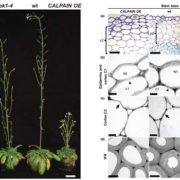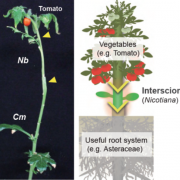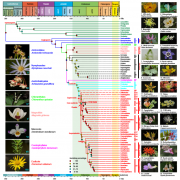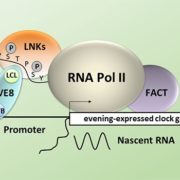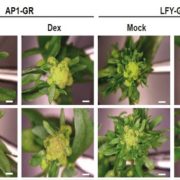A 5-enolpyruvylshikimate 3-phosphate synthase functions as a transcriptional repressor in Populus
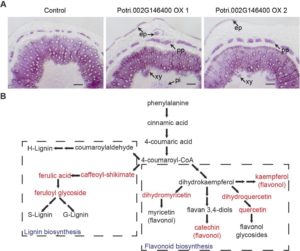 Here’s a fascinating story; starting with an association study, Xie et al. found that a protein previously identified as an enzyme involved in phenylpropanoid metabolism (specifically, 5-enolpyruvylshikimate 3-phosphate synthase, EPSP) also acts as a transcriptional regulator of this pathway, not only increasing lignin content but also the expression of dozens of other genes involved in lignin biosynthesis. Furthermore, the poplar genome has an “ordinary” EPSP gene and a second gene encoding the “dual function” enzyme. The “dual function” protein has EPSP enzymatic activity but also a DNA binding domain, encoded by an extra exon, not found in the ordinary EPSP gene. As the authors summarize, “protein moonlighting by biosynthesis enzymes, exemplified by PtrEPSP-TF,… has been proposed as an adaptive mechanism yielding novel genetic regulators in eukaryotes, where organismal complexity necessitated a complementary expansion of transcription factors.” (Summary by Mary Williams) Plant Cell 10.1105/tpc.18.00168
Here’s a fascinating story; starting with an association study, Xie et al. found that a protein previously identified as an enzyme involved in phenylpropanoid metabolism (specifically, 5-enolpyruvylshikimate 3-phosphate synthase, EPSP) also acts as a transcriptional regulator of this pathway, not only increasing lignin content but also the expression of dozens of other genes involved in lignin biosynthesis. Furthermore, the poplar genome has an “ordinary” EPSP gene and a second gene encoding the “dual function” enzyme. The “dual function” protein has EPSP enzymatic activity but also a DNA binding domain, encoded by an extra exon, not found in the ordinary EPSP gene. As the authors summarize, “protein moonlighting by biosynthesis enzymes, exemplified by PtrEPSP-TF,… has been proposed as an adaptive mechanism yielding novel genetic regulators in eukaryotes, where organismal complexity necessitated a complementary expansion of transcription factors.” (Summary by Mary Williams) Plant Cell 10.1105/tpc.18.00168


